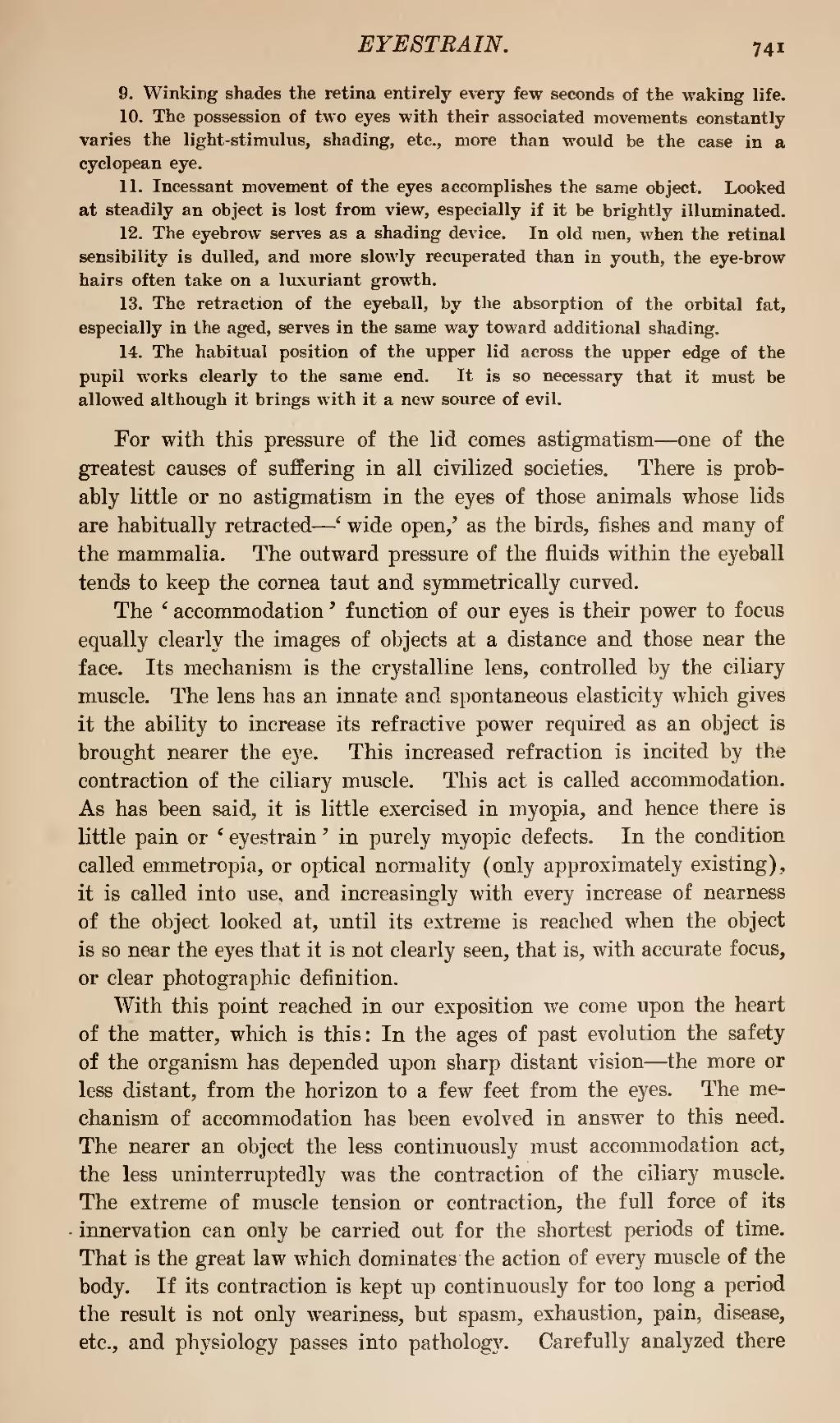9. Winking shades the retina entirely every few seconds of the waking life.
10. The possession of two eyes with their associated movements constantly varies the light-stimulus, shading, etc., more than would be the case in a cyelopean eye.
11. Incessant movement of the eyes accomplishes the same object. Looked at steadily an object is lost from view, especially if it be brightly illuminated.
12. The eyebrow serves as a shading device. In old men, when the retinal sensibility is dulled, and more slowly recuperated than in youth, the eye-brow hairs often take on a luxuriant growth.
13. The retraction of the eyeball, by the absorption of the orbital fat, especially in the aged, serves in the same way toward additional shading.
14. The habitual position of the upper lid across the upper edge of the pupil works clearly to the same end. It is so necessary that it must be allowed although it brings with it a new source of evil.
For with this pressure of the lid comes astigmatism—one of the greatest causes of suffering in all civilized societies. There is probably little or no astigmatism in the eyes of those animals whose lids are habitually retracted—'wide open' as the birds, fishes and many of the mammalia. The outward pressure of the fluids within the eyeball tends to keep the cornea taut and symmetrically curved.
The 'accommodation' function of our eyes is their power to focus equally clearly the images of objects at a distance and those near the face. Its mechanism is the crystalline lens, controlled by the ciliary muscle. The lens has an innate and spontaneous elasticity which gives it the ability to increase its refractive power required as an object is brought nearer the eye. This increased refraction is incited by the contraction of the ciliary muscle. This act is called accommodation. As has been said, it is little exercised in myopia, and hence there is little pain or 'eyestrain' in purely myopic defects. In the condition called emmetropia, or optical normality (only approximately existing), it is called into use, and increasingly with every increase of nearness of the object looked at, until its extreme is reached when the object is so near the eyes that it is not clearly seen, that is, with accurate focus, or clear photographic definition.
With this point reached in our exposition we come upon the heart of the matter, which is this: In the ages of past evolution the safety of the organism has depended upon sharp distant vision—the more or less distant, from the horizon to a few feet from the eyes. The mechanism of accommodation has been evolved in answer to this need. The nearer an object the less continuously must accommodation act, the less uninterruptedly was the contraction of the ciliary muscle. The extreme of muscle tension or contraction, the full force of its innervation can only be carried out for the shortest periods of time. That is the great law which dominates the action of every muscle of the body. If its contraction is kept up continuously for too long a period the result is not only weariness, but spasm, exhaustion, pain, disease, etc., and physiology passes into pathology. Carefully analyzed there

